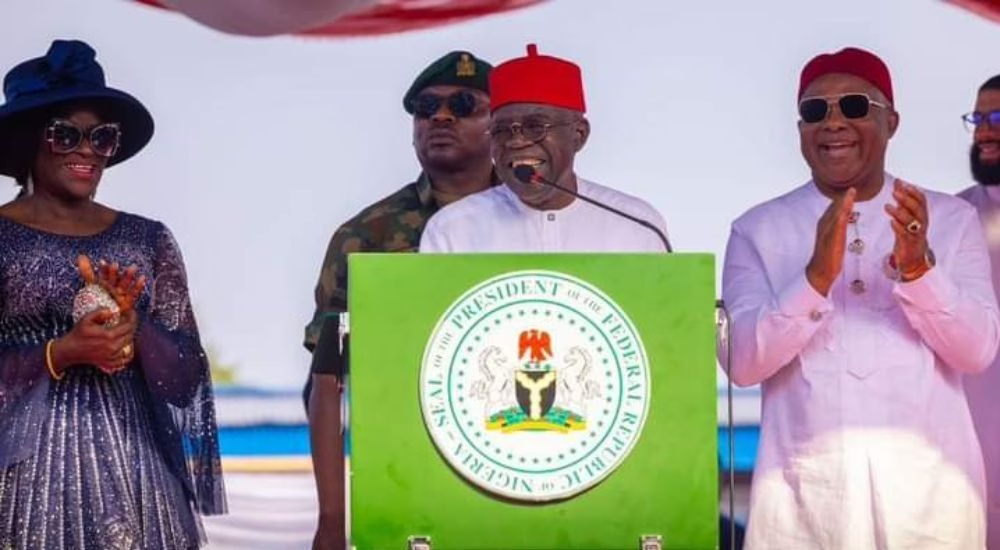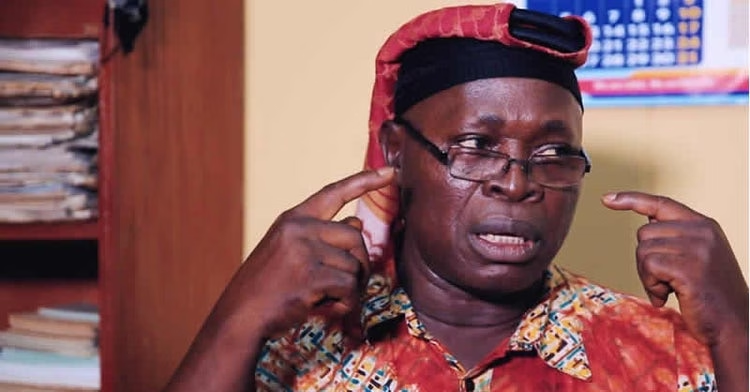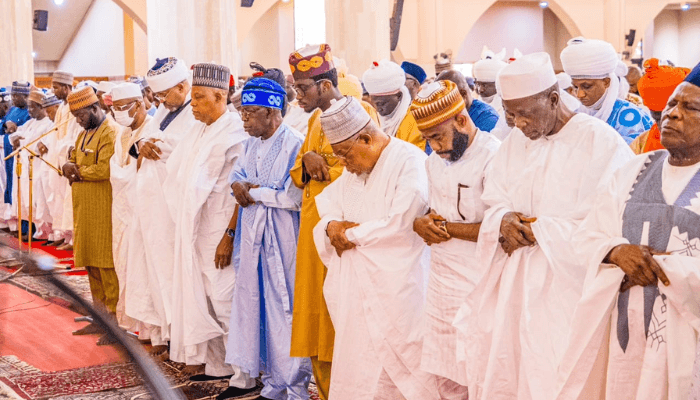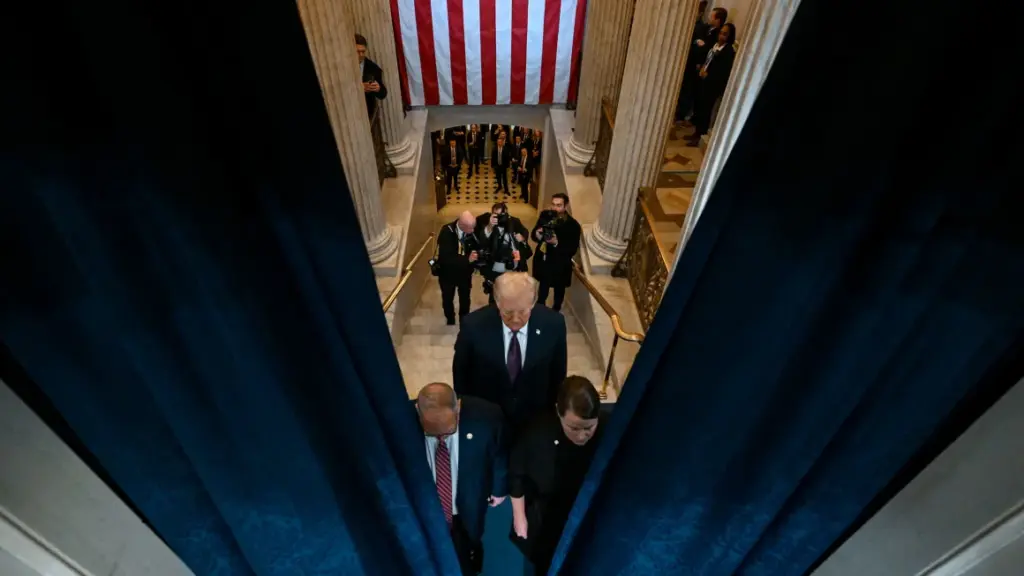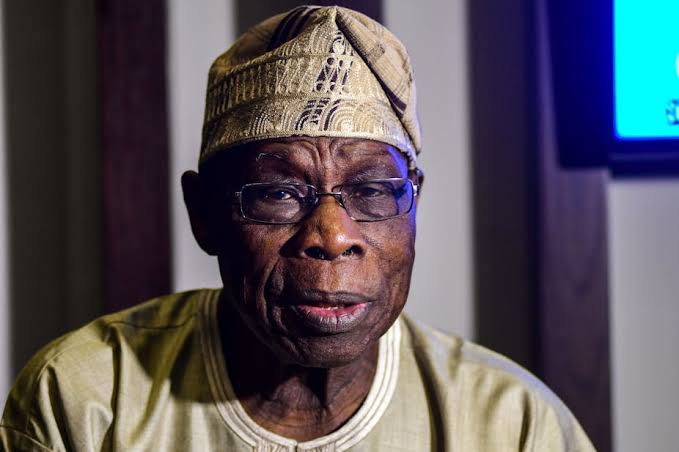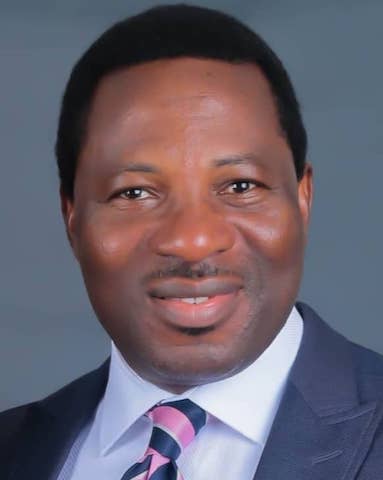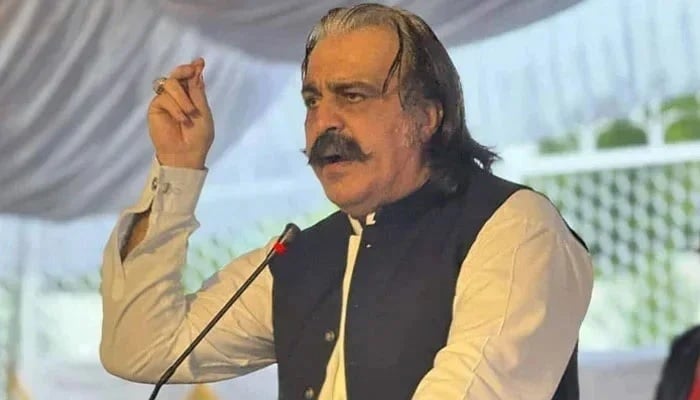Taking Shots With Spike Lee and His Arsenal Fan Club: “It’s Always Electric When He Shows Up”
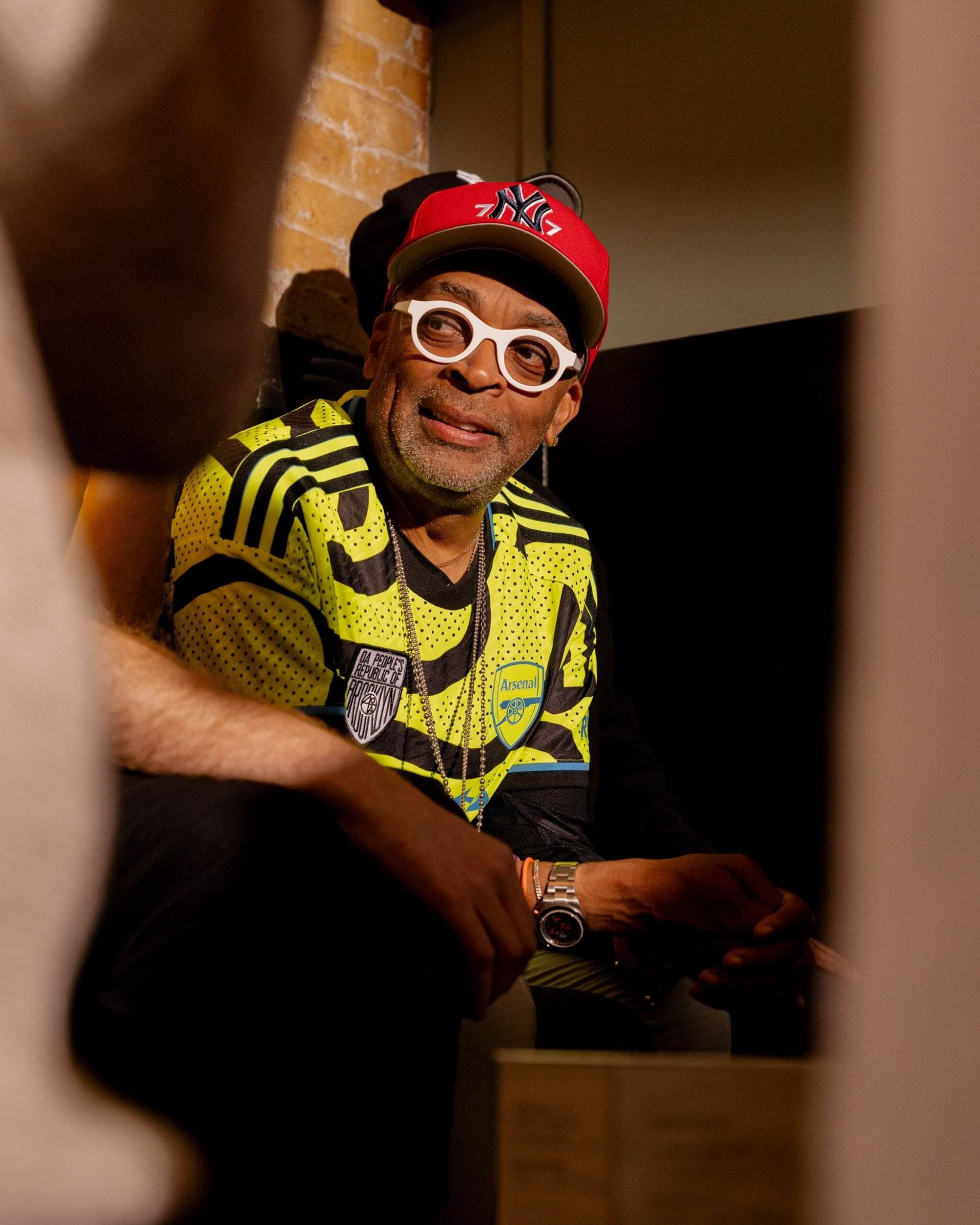
Politics tamfitronics
It was just about game-time, and Spike Lee was amped. He rubbed his hands and tapped his feet. The opening whistle couldn’t come fast enough.
Once play began, Lee was a fount of running commentary, his eyes fixed to the action. “How is that not a foul?” Lee hollered. “You can’t hold the guy’s hand!”
This was primo Spike, vintage Spike—the Spike who has spent decades talking shit and working the refs from his courtside throne at Madison Square Garden. At a building dubbed “the world’s most famous arena,” he has earned a reputation as perhaps the world’s most famous fan, and as of Friday, a Hall of Fame one, too.
But on this particular Sunday, Lee was not cheering on his beloved New York Knicks at the Garden or high-fiving the Liberty’s Sabrina Ionescu at the nearby Barclays Center. Instead, he was among the roughly 100 people who had crammed into the Brooklyn sports bar FancyFree before noon to watch Arsenal square off with Manchester City in a clash of Premier League title contenders.
Lee has been an Arsenal supporter—a “Gooner”—since he befriended Thierry Henry, the club’s greatest legend and a World Cup champion with France. The two got to know each other when Henry was still slicing through opposing defenses for Arsenal at the start of the century, and their paths continued to cross after Henry joined the New York Red Bulls of Major League Soccer in 2010.
But Lee’s affinity deepened as he learned about Arsenal’s legacy of integration and multiculturalism. In 2002, the club became the first to start nine black players in an English top-flight match.
“My entrée was Thierry,” Lee said. “Then I started reading about the history of the Black players they were playing when other teams weren’t willing to do that. I said, Okay. They had that history of being progressive, and they were winning too…. Any team that don’t have no color ain’t winning, right? Maybe except for hockey!”
On any given Arsenal matchday, Lee can be found posted up in his designated corner at FancyFree, bantering among the hordes of other supporters. “If you want to watch a game and you’re a Gooner,” he said, “that’s the spot.”
If Arsenal’s heritage made the club a natural recipient of Lee’s affection, proximity and personal connection made FancyFree a natural recipient of his patronage. The bar, which opened in 2021, abuts the headquarters of Lee’s production company, 40 Acres and a Mule. And in a stroke of Brooklyn kismet, Jason Burelle, a co-owner of FancyFree, worked as a copywriter at Lee’s advertising agency more than a decade ago (He was also briefly a copywriter for Vanity Fair’s parent company, Condé Nast).
After Burelle took over the location, Lee had to do a double take.
“I walk out and I see Spike and he’s like, What are you doing?” recalls Burelle, who co-owns two other bars in Brooklyn. “I was like, I own this space now.”
Burelle, an Arsenal fan from his time living in London in the early 2000s, quickly turned FancyFree into a mecca for area Gooners. As he decked the bar out with the club’s red and white flags, attendance for the team’s matches on weekend mornings steadily grew, eventually giving rise to a dedicated Arsenal supporters group, the Brooklyn Invincibles (a nod to the Henry-led Arsenal side that finished the 2003-2004 Premier League season unbeaten).
By Matt Genovese.
At the behest of some of the group’s members, Burelle began opening FancyFree for matches just after dawn, embracing the Field of Dreams mantra for soccer in the United States: If you serve pints and show the Premier League, they will come.
“We were like, J, I promise you if you’re willing to wake up at 7:30 in the morning sometimes, we’ll bring the people,” said Howard Grandison, a cofounder of the Brooklyn Invincibles.
Lee eventually took notice of what was happening next door at FancyFree. Last season, the bar’s Arsenal contingent began staging post-match “family photos” in front of the 40 Acres and a Mule headquarters, which is adorned with murals paying homage to the Knicks and Lee’s seminal film, Do the Right Thing.
The crew tagged Lee in one of those posts, prompting him to respond in the comments. When Burelle saw him on the block after that, Lee vowed to be at FancyFree the next time Arsenal took the pitch. He has been a fixture there among the Brooklyn Invincibles ever since.
Burelle doesn’t typically do reservations, but he makes an exception for Lee. “He’s such a fabric of Brooklyn,” Burelle said. “It’s always electric when he shows up.”
For Lee, 67, the regular trips to FancyFree represent a celebration of the borough where he was raised and one of his favorite pastimes. Brooklyn and sports have long been two of the major veins that run through his body of work. He Got Game centers around a heralded high school basketball recruit from Coney Island who has reconnected with his incarcerated father. Lee’s 2012 film Red Hook Summer was set in the housing projects where former Knick great Carmelo Anthony was raised. And in Do the Right Thing, Lee captured the simmering racial tension on a Bedford-Stuyvesant block in a scene involving a white character in a Larry Bird shirt. Lee’s character, Mookie, also dons a Jackie Robinson Brooklyn Dodgers jersey, the iconic 42 emblazoned on the back.
A son of Brooklyn and a die-hard sports fan, Lee is also someone who wants to be in the action, on the ground, in the thick of it. Whether it’s sitting courtside or watching a game at his local, Lee is someone who wants to be there—wherever there may be.
“I love to be in the mix,” Lee says.
I met Lee at his company’s headquarters a little more than an hour before kickoff that morning. It was the first day of autumn, a changing of the season marked by a light dusting of yellow leaves on the sidewalk. More than a dozen Arsenal supporters were already gathered outside FancyFree, eagerly waiting for Burelle to open the doors.
Lee grew up in Fort Greene, and 40 Acres and a Mule has maintained its base of operations in the neighborhood for more than 30 years. The company’s offices were previously located just around the corner from its current location, which it moved to in 2008. Lee no longer lives in Brooklyn—but he commutes from Manhattan to Fort Greene, where he remains a local institution, and a man about the neighborhood.
“I see Spike getting a croissant before the game, or having a moment to himself to clear his mind,” said Jason Andrew, another cofounder of the Brooklyn Invincibles. “That’s Brooklyn.”
By Matt Genovese.
Located on a lush block lined with brownstones and townhouses, just down the way from Fort Greene Park, the 40 Acres and a Mule building serves as Lee’s place of business, but it also doubles as a temple for his prodigious collection of sports memorabilia, artwork, and movie posters. I was led up a stairwell filled with autographs from various Hollywood giants (“To Spike, who is Luke incarnate,” Paul Newman wrote on a poster for Cool Hand Luke.) before arriving at a vast room that resembled a dance studio with its shiny wooden floor.
It was there where I found Lee in white-rimmed glasses, a red Yankees cap, and a bright neon yellow Arsenal jersey customized with the number 40 and ACRES printed on the back. Much like the stairwell, the room’s white walls were littered with artifacts, making the whole place feel like Lee’s personal museum. In fact, much of his personal collection was on display at the Brooklyn Museum as part of a four-month exhibition that ended in February.
We meandered our way around the room as Lee highlighted the signatories on the framed posters. He pointed to the Italian poster for The Godfather. “Signed by Francis,” Lee said, before moving on to a poster for Taxi Driver. “Signed by DeNiro.”
He opened the door that led to an adjoining editing room, where there was a mini-shrine to Pelé and Muhammad Ali, including one of the boxing legend’s signed doodles that showed him “knocking a motherfucker out,” as Lee put it. There was also a framed and autographed telegram containing a poem written by Ali when he was still known as Cassius Clay.
“Read it out loud,” Lee instructed. I obliged, though probably only with a small fraction of the author’s panache.
The door to the editing room displayed a poster for High and Low, the 1963 crime film by Akira Kurosawa. Lee is making what he describes as a “reinterpretation” of the film starring Denzel Washington. It will be Lee’s fifth movie with Washington, and their first collaboration since 2006’s Inside Man.
The business of movies has shifted dramatically since then and Lee, a certified cinephile, isn’t totally down with all of the changes. “I don’t want to sound like an old fuddy-duddy. I know at one time people thought that televisions were going to be the doom of films forever. But to see this young generation watching movies like this,” Lee said, holding up his phone. “And it’s not just that. They’re watching it vertically.”
He flipped the phone horizontally to finish his point.
“Turn the fucker like this!” Lee said. “That’s the way it was shot.”
Lee’s rendition of High and Low will be released next year, first in theaters and then via streaming on Apple TV+. But he is also eager for audiences to see his older films on the big screen. Last month, after renaming its downtown Brooklyn location in Lee’s honor, Alamo Drafthouse began screening six of his best-known titles.
“I mean, again, I don’t want to sound like a fuddy-duddy, but when I make films, I’m not making them for the TV screen,” he said.
Lee had a typically busy schedule when I met him that Sunday. Later that afternoon, after watching the Arsenal match at FancyFree, he was due to attend a fundraiser for Kamala Harris at Cipriani Wall Street.
On this morning, 44 days from the election, Lee was feeling optimistic—but still plenty anxious. “It’s going to be close,” he said. “This guy has laid the groundwork saying that if he doesn’t win, it’s because it was rigged.”
Lee is loath to refer to Donald Trump by name, instead preferring “this guy,” “that guy,” or, in his more colorful moments, “Agent Orange.”
“They act like January 6 never happened because he tells them it wasn’t his fault,” Lee said. “But they would have killed the vice president. What’s his name again?”
“Mike Pence,” I said.
“They would have killed him.”
Lee has been active in Democratic Party politics over the last several presidential election cycles. He was an enthusiastic booster of Barack Obama, and then endorsed Bernie Sanders in 2016. And Lee has been a longtime supporter of Harris, having hosted a fundraiser for her presidential campaign at his Martha’s Vineyard home in 2019. Outside the 40 Acres and a Mule headquarters, just above the Do the Right Thing mural, Lee has displayed a large flag containing an illustration of Harris by the artist Shepard Fairey accompanied by the word FORWARD.
In August, Lee attended the Democratic National Conven tion in Chicago, where he watched Harris accept the party’s nomination. He was there in support of the ticket, standing among the New York delegation during the roll call, but he also chronicled the week’s proceedings for GQ. The assignment put Lee on the ground, which is typically where he prefers to be.
“I want to be there,” he said. “I don’t want to be read about it, if I can be there. So it will be my vision of what I’m seeing, not something I’m reading or watching on TV.”
Harris’s ascension to the top of the ticket galvanized Democrats and left-leaning voters, including Lee, who had the same reaction as many of us during the June debate between Trump and President Joe Biden. The president, Lee said, was akin to a pitcher who had lost his fastball, or a prized fighter whose reflexes had abandoned him.
“I felt for him,” he said of Biden. “He was stumbling and bumbling, and that guy is a shark who smells blood in the water. But it takes one little thing to turn it around, so historians can go back to that debate and see what happened. The fallout catapulted a sister to represent the Democratic Party.”
By Matt Genovese.
Lee glanced at his phone. Kickoff to the Arsenal match was 15 minutes away.
“Ready?” he asked.
I trailed him down the stairwell, where we could hear the pre-match commotion at FancyFree pulsating next door.
“See, that’s the game right there,” Lee said, tapping on the wall.
We breezed down the stairs before Lee spotted an item in his collection that demanded tribute.
“This is the one,” he said with reverence, placing his fingers on the glass. “The French poster for Breathless, signed by Godard.”
He pushed open the front door to the building and emerged outside to find a group of Gooners walking to the bar.
“Arsenal!” Lee shouted, drawing a bemused look from a man passing by on his phone.
“Uh, I’m right next to Spike Lee right now,” the man told the person on the other end.
I followed Lee through the backdoor of FancyFree, where we were met by Burelle. Lee snaked his way through the crowd, exchanging smiles and nods along the way. Fans stood shoulder to shoulder, precariously nursing their pints. A handful of late-arriving patrons spilled out onto the front patio and watched the match through the bar’s open bank of French windows.
Lee’s location manager Tim Stacker was waiting for us at one of three tables in the back marked reserved. Shortly after kickoff, we were joined by Lee’s son, Jackson, and his friend.
There was a festival atmosphere at FancyFree in the buildup to the match, with chants and songs ringing out sporadically. But all the buzzy excitement was paired with a healthy dose of fear.
In the previous two campaigns, Arsenal came up agonizingly short in its bid to dethrone Manchester City, a veritable juggernaut and the four-time defending Premier League champions. Gooner nerves were running high—including my own. I had accompanied Lee that day on assignment, but as a proud (and at-times tortured) Arsenal supporter myself, I was hardly an unbiased observer.
Sitting next to Lee, I asked if his fandom ever got in the way of his work. Has he ever been stuck on set during, say, a Knicks playoff game? Not a chance. In those circumstances, Lee told me that the cast and crew know “it’s not going to be a long day.”
“They know they’re going home early,” he said.
The match began inauspiciously for Arsenal, as the indomitable Erling Haaland found the back of the net in the ninth minute to give Manchester City an early 1-0 lead.
“How tall is he?” Lee asked me.
“6’4,” I said.
“Big guy.”
Lee looked on as the City players mobbed Haaland, whose imposing frame and long blond hair evoke an ancient warrior.
“Where’s he from?” he asked.
“Norway,” I said.
He glanced at the screen, assessing Haaland as if he were casting for a nordic Spike Lee joint.
“Viking!” he said with a smile.
Arsenal leveled the scoreline in the 22nd off a majestic goal by Riccardo Calafiori, and then took a 2-1 lead just before halftime off a thumping header by Gabriel Magalhães. FancyFree was in full voice and Lee, who had been working on a plate of waffles, stood up to exchange celebratory high fives.
Arsenal were poised to go into intermission with a lead, as Lee and the rest of the Arsenal faithful bayed for the ref to end the first half.
“Blow the whistle!” he yelled. “Fuckin’ bullshit here. Halftime!”
Looking ahead to the second half, Lee said that Arsenal “can’t just play defensive.”
“They still gotta go for it,” he said.
But moments before the first half ended, Arsenal were dealt a stunning blow, as Leandro Trossard picked up a controversial second yellow card, leading to his dismissal from the match. The exuberance that followed Arsenal’s second goal gave way to confusion and outrage at FancyFree.
“What?!” Lee yelled.
The call sullied the halftime mood, as Lee and the other fans contemplated the task of playing the final 45 minutes down a man. Arsenal would have no choice but to play on the defense—or “park the bus,” to use a common soccer parlance.
But the beer kept flowing, and so did the banter. Looking up from the table, Lee spotted Jason Andrew, the Brooklyn Invincibles cofounder, weaving through the crowd. “Where you going?” Lee asked. Andrew smiled, and pointed to his seat near the front of the bar. Lee’s presence was felt at FancyFree that day, but there were no selfie-seekers. He was a VIP among the masses.
“If you are a New Yorker, you understand,” said Andrew. “You have to allow people to be themselves and give them grace. If you don’t fan out, you can have a genuine moment.”
The second half saw shorthanded Arsenal absorb an onslaught of pressure.
“I don’t like this,” Lee said as Manchester City threatened. “I don’t like this.”
Each minute that passed without conceding felt like a gift; every successful block and clearance by Arsenal was treated like a goal by the fans at FancyFree. As the clock slowly, maddeningly ticked by, the bar was on edge. By the 90th minute, however, it appeared that Arsenal had grabbed a famous victory. Almost on cue, a tray of lemon drop shots arrived for Lee, Stacker and me. But as we clinked and sipped, the Arsenal dam finally broke. Deep into stoppage time, and with one of the final kicks of the match, Manchester City’s John Stones scored a last-gasp equalizer. FancyFree went silent, save for the blare of the televisions and a smattering of expletives from bargoers. The match ended in a 2-2 draw—a more welcome outcome than a loss, of course, but one that invited stomach-turning thoughts of what could have been.
Still, even amid the disappointment, there were traditions to observe. Lee led a procession of Gooners outside for the post-match “family photo.” Fans streamed out of the bar by the dozens, sporting Arsenal shirts from different eras and spanning the gamut of race and age. Stacker climbed atop a ladder to capture everyone in the shot. Lee stood in the middle, in the mix as ever.
By Matt Genovese.
-
Cheryl Hines Is Married to RFK Jr.: How’s Your Year Going?
-
Get True Colors, an Art-World Digest From Nate Freeman, Straight to Your Inbox
Discover more from Tamfis Nigeria Lmited
Subscribe to get the latest posts sent to your email.



 Hot Deals
Hot Deals Shopfinish
Shopfinish Shop
Shop Appliances
Appliances Babies & Kids
Babies & Kids Best Selling
Best Selling Books
Books Consumer Electronics
Consumer Electronics Furniture
Furniture Home & Kitchen
Home & Kitchen Jewelry
Jewelry Luxury & Beauty
Luxury & Beauty Shoes
Shoes Training & Certifications
Training & Certifications Wears & Clothings
Wears & Clothings





